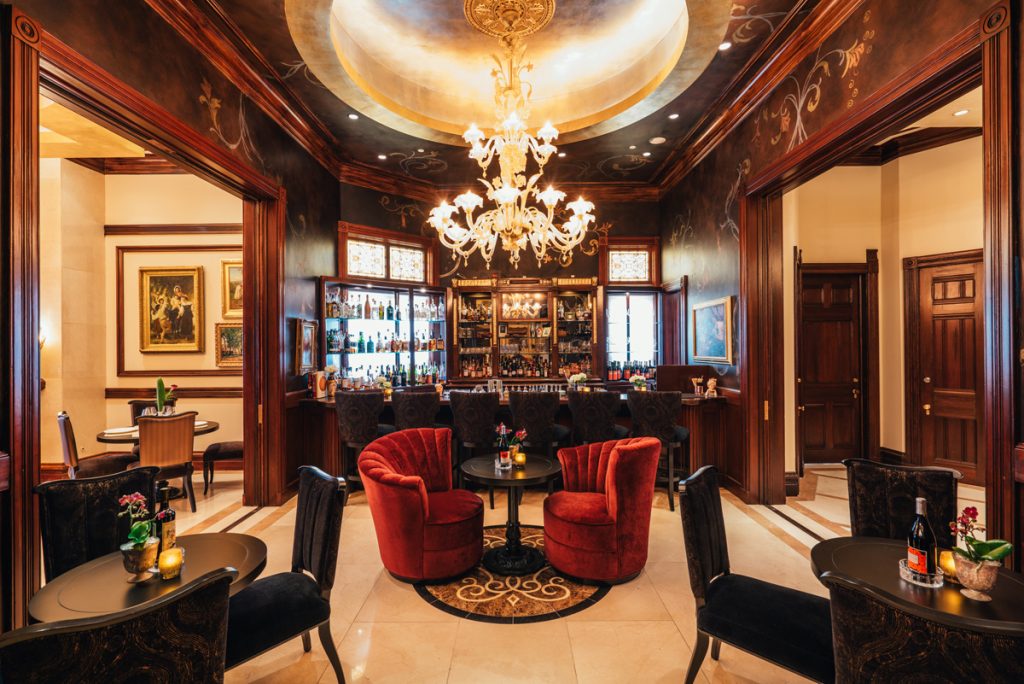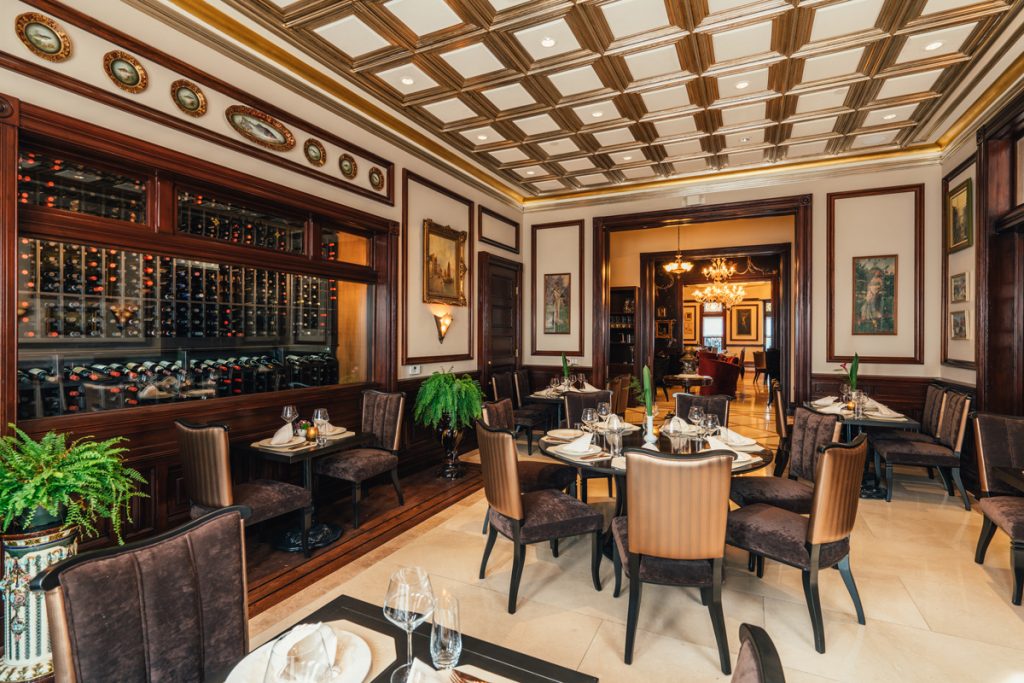By FRAN MORELAND JOHNS
“I want to have the most beautiful hotel in San Francisco,” says Bernard Rosenson about the Mansion on Sutter, which he recently purchased.
A visit to 1409 Sutter Street suggests that wish is on its way to becoming reality. From the carefully restored Victorian era woodwork to the polished marble floors and unique art and antiques — plus a presidential suite with steps leading to a private gazebo with views — the Mansion on Sutter is emerging as the newest jewel in the neighborhood’s crown.
Its signature restaurant, 1881, is already serving dinners created by executive chef Juan Carlos Olivera, and a downstairs speakeasy bar, Notorious, is set to open on July 4.
Delivering a beautiful hotel is designer Timothy Quillen, who moved from his East Bay home to an apartment around the corner to be on the job full time.
Quillen, whose background includes a variety of experiences in upscale hospitality, most recently designed and sold East Bay homes ranging from $2 million to $10 million. Settling in at the Mansion on Sutter as it undergoes its latest rebirth — from a somewhat garish $10,000-a-night Airbnb to a quietly elegant restored Victorian — has been not so much a job to Quillen as a labor of love.
The Mansion on Sutter joins a distinguished list of Rosenson properties that include boutique hotels Chateau du Sureau in Oakhurst, near Yosemite, and the Mirabelle Inn in Solvang, as well as the 58-acre Coquelicot Estate vineyard in Los Olivos. Fine wine — including many labels now offered at the Mansion on Sutter — is one of his passions, Rosenson says. Another is finding and buying original art from the period between the 1880s and 1930s. He and his wife Cynthia have amassed an impressive private collection.
Entering the Mansion on Sutter is much like stepping back into an era of Victorian elegance. Just inside the front door one encounters resident goldfish Lucy (she’s the one with the big red head) and her cohort Ethel, swimming happily in a vintage lighted fishbowl stand, a decorative accessory popular in homes of the Victorian era.
The entry opens into a high-ceilinged, marble-floored lobby, which still bears reminiscences of the previous lives of the stately mansion.
The first was as an opulent home, built in 1881, for newlyweds Mary Pauline and Theodore F. Payne of New York. Mary Pauline O’Brien was the niece of the Comstock “Silver King” William S. O’Brien, who made his fortune as an investor in the Consolidated-Virginia Mine in Virginia City, Nevada. When he died in 1878, at age 53, Pauline O’Brien Payne inherited a chunk of her uncle’s estate. She spent $16,500 of it on what became known as the Payne Mansion; it was designed by architects William Curlett and Theodore Eisen.
Since the time of the Paynes, the mansion has served as home to the Japanese YMCA, as a commercial space for an antiques and interior design business, and for many years as headquarters of the San Francisco Medical Society. It survived two major earthquakes, in 1906 and 1989, and more recently the uproar of a number of raves that took place in the ground floor common area during its brief period as the Payne Mansion Hotel. Its newest iteration as the Mansion on Sutter brings the stately building full circle.
Quillen began his restoration and renovation project a year ago, working in a corner of the main floor with a piece of plywood on sawhorses serving as his desk. That space is now the corner of the Dali Room, a dining area seating about 35, with gold and white decor and featuring an arrangement of works by Salvador Dali. Adjoining rooms form wine and cocktail areas, one with a mahogany-framed, lighted glassfront wine cabinet.
The dining room, 1881, officially opened two weeks before Christmas, and seven rooms for lodging on the second floor opened a week later. There will eventually be five more rooms and a workout room on the third floor; all are currently in varying stages of completion.
Art and antiques are carefully placed throughout the hotel, designed to give it the atmosphere of an authentic Victorian mansion. Among Quillen’s favorites are a pair of oil and mosaic mixed media on metal portraits from the continental school, signed H. Gurller, 1911.
Others include works by better known artists such as Leon Jean Basile Perrault (1832–1908) and William Oliver the Younger (1823–1901), as well as objects such as a large Murano Venetian glass chandelier and an antique ceramic Majolica planter on a base from Sweden. Says the designer: “I was lucky to be able to wander through the Rosensons’ collections and choose pieces that would fit. I am always looking.”
That constant looking often paid off: at an Atlanta antique dealership, for instance, he found a 22-foot-long rosewood maple bar, which will be a centerpiece feature of Notorious when it opens in a few months.
EARLIER: “Grand in a very Victorian way“
Filed under: Food, Drink & Lodging, Landmarks






